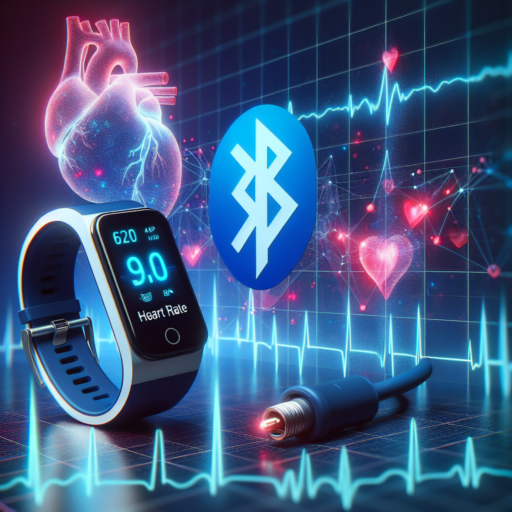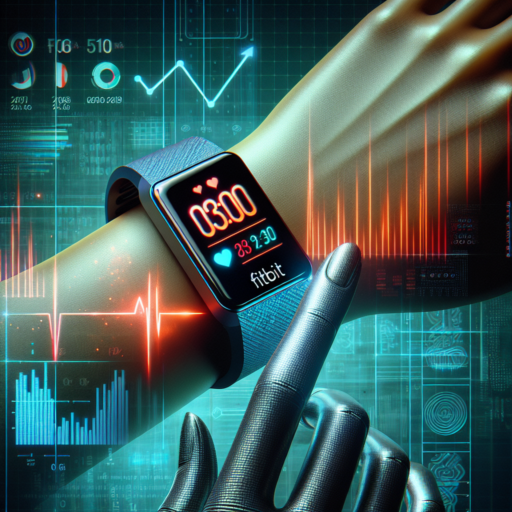Understanding Why Your Heart Monitor is Flashing Green
When you notice your heart monitor flashing green, it’s essential to understand the meaning behind this signal. This visual cue is more than just an arbitrary color; it’s your device’s way of communicating with you. Below, we’ll delve into the primary reasons behind this phenomenon, ensuring you can interpret what your heart monitor is attempting to convey.
Significance of the Green Flash
The green flashing light on your heart monitor is typically associated with the device’s heart-rate tracking functionality. Green light emanates from LEDs beneath the device’s surface, which are used in conjunction with photodiodes to measure your blood flow. This process, known as photoplethysmography, enables the device to calculate your heart rate by detecting changes in blood volume beneath your skin. The green flash, therefore, plays a crucial role in monitoring your heart rate accurately and efficiently.
Common Factors Affecting the Green Flash
- Device Fit: An improper fit can lead to irregular signals or flashes. Ensuring your heart monitor is snug yet comfortable can improve accuracy.
- Skin Type: Variations in skin type or pigmentation might affect how the green light penetrates the skin, influencing the monitor’s readings.
- Activity Level: High-intensity activities may cause the monitor to flash more frequently or irregularly as it works harder to track rapid heart rate changes.
Recognizing these factors can help you better understand the behavior of your heart monitor and what steps you might take to ensure it functions optimally.
Common Causes for Green Flashing Lights on Heart Monitors
Seeing a green flashing light on a heart monitor can be perplexing for both patients and healthcare providers alike. It is vital to understand that these indicators are designed to communicate specific information regarding the status and functionality of the device. The green light, in particular, often signifies that the monitor is operating correctly, but it can also indicate other actions are required or signal specific conditions related to the patient’s heart rhythm or the device’s operational status.
1. Normal Operation Indication
The most common reason for a green flashing light on heart monitors is to signify that the device is operating as expected. This light is often a visual confirmation that the monitor is actively tracking the patient’s heart rhythm without detecting any abnormal patterns that could indicate arrhythmias or other conditions. However, it’s important for users and healthcare providers to familiarize themselves with the specific user manual of the device, as interpretations of indicator lights can vary slightly among different models and manufacturers.
2. Battery Status and Charging Indicators
In many cases, a green flashing light on a heart monitor can also indicate the battery status. For instance, a steady green light might represent a fully charged device, while a flashing green light often signifies that the battery is currently charging. It’s critical to ensure that the heart monitor is always sufficiently charged to maintain continuous monitoring, especially for patients relying on these devices for ongoing cardiac health issues.
3. Connectivity and Data Transfer
Another common cause for green flashing lights on heart monitors is related to connectivity and data transfer. In today’s digital age, many heart monitors are equipped with Bluetooth or Wi-Fi capabilities, allowing for the wireless transmission of data to healthcare providers or central monitoring systems. A flashing green light might indicate that the device is in the process of synchronizing or transmitting data. Ensuring a stable connection is crucial for the accurate monitoring and analysis of heart rhythms over time.
No se han encontrado productos.
Is a Green Flashing Light on Your Heart Monitor a Reason for Concern?
Understanding the signals of your heart monitor can be crucial in maintaining a healthy lifestyle or monitoring a condition. A green flashing light on your heart monitor often indicates that the device is functioning correctly and actively tracking your heart rate. It’s important, however, to familiarize yourself with the specific models and their indications as manufacturers may assign different meanings to light signals.
In many cases, a green light signals normal operation and is not a cause for concern. It could simply mean that the monitor is in standby mode or actively recording your heart rate without any detected anomalies. This is generally seen as a positive indication that the device is engaged and monitoring as expected. But, it is always recommended to consult your device’s manual for the exact interpretations and functions attributed to its light signals.
Nonetheless, constant vigilance is key when it comes to heart health. If you observe a green flashing light accompanied by unusual symptoms such as dizziness, shortness of breath, or palpitations, it might be prudent to seek medical advice. Sometimes, the way our body interacts with the device can yield false indicators of normalcy, which only a healthcare professional can decode accurately. Monitoring the pattern and frequency of the green flashing light, in conjunction with your physical well-being, plays an essential role in ensuring that your heart monitor serves its purpose effectively.
How to Respond to a Green Flashing Light on Your Heart Monitor
Seeing a green flashing light on your heart monitor can be a source of confusion and concern for many users. However, it’s essential to understand what this indicator means for the proper management of your health monitoring device. The green flashing light is commonly associated with normal operation or specific connectivity statuses, but its meaning can vary slightly across different brands and models of heart monitors.
Identifying the Meaning of the Green Flashing Light
First and foremost, consult your heart monitor’s user manual for the most accurate interpretation of the green flashing light. Typically, this signal indicates that the device is actively monitoring your heart rate or that it has successfully connected to another device, like your smartphone or a fitness app. In some cases, a rapid green flash could also suggest that the device is in the process of syncing data.
Steps to Follow Upon Seeing a Green Flashing Light
- Check Device Connectivity: Ensure that your heart monitor is correctly paired with any external devices or apps it’s supposed to be connected with. A stable connection is often indicated by a steady or slow blinking green light.
- Review Your Manual: Since the meaning of the green flashing light can differ by device, looking up the specific indicator in your user guide is essential for accurate interpretation and appropriate action.
- Monitor Your Readings: If the green light indicates active heart rate monitoring, observe your device for any unusual readings or fluctuations in your heart rate that may necessitate medical attention or adjustment of your monitor settings.
In conclusion, while a green flashing light on your heart monitor typically signifies normal functioning or successful connectivity, attentiveness to what exactly it denotes for your specific model is crucial. Properly responding to this indicator ensures optimal use of your heart monitoring device, enabling effective tracking of your cardiac health.
Experts Explain: The Significance of Green Lights on Heart Monitors
Understanding the intricacies of heart monitors can often seem complex, but one feature that grabs attention is the green light. This distinctive feature is more than just an aesthetic choice; it plays a crucial role in the functionality and accuracy of the device. As experts point out, the green light is essential for the photoplethysmogram (PPG) technology that most modern heart monitors use to detect blood volume changes in the microvascular bed of tissue.
The use of green LEDs in heart monitors is not coincidental. Green light, with its specific wavelength, is absorbed by the blood more efficiently than other colors, which enhances the device’s ability to monitor heart rate with remarkable precision. This absorption property allows for a clear distinction between the times when the blood volume is higher (during the heart’s pumping phase) and when it is lower, making the monitor’s readings more accurate and reliable. Experts emphasize the importance of this feature, especially for individuals relying on these monitors for medical monitoring or during fitness activities.
Furthermore, the interaction between green light and our skin also plays a pivotal role. Skin and blood have different absorption properties, and the green light’s ability to differentiate between these allows for a more detailed analysis of blood flow and heart rate. This is particularly beneficial for continuous monitoring, providing users and healthcare providers with data that can help in assessing cardiovascular health more effectively.
Troubleshooting Tips: Fixing a Green Flashing Light on Your Heart Monitor
Experiencing a green flashing light on your heart monitor can be perplexing and worrying. However, this common issue often has simple solutions that can help you get back to monitoring your heart’s health in no time. Understanding the underlying causes is the first step in troubleshooting this issue effectively.
Check the Connection and Fit of Your Monitor
One of the primary reasons your heart monitor might flash a green light is due to improper fitting or connection issues. Most heart monitors use this indicator as a sign that they’re not receiving consistent data. Ensure that your monitor’s sensors are in direct contact with your skin and that the device is neither too tight nor too loose. A slight adjustment in how you wear your device can often resolve this issue quickly.
Inspect for Low Battery or Technical Malfunctions
A green flashing light might also signal low battery power or a technical malfunction within the device. First, try recharging your heart monitor or replacing the batteries if applicable. If the issue persists, a reset or restart of the device might be necessary. Refer to the manufacturer’s instructions for guidance on how to execute this step without causing further issues. In cases where these steps do not resolve the problem, contacting customer support or seeking professional advice is advisable to ensure your heart monitor functions optimally.
Preventive Measures to Avoid Green Flashing Lights on Heart Monitors
Ensuring the reliability and accuracy of heart monitors is crucial for effective patient monitoring and healthcare. A common issue encountered with these devices is the occurrence of green flashing lights, often signaling a need for maintenance or adjustment. Before diving into troubleshooting steps, it’s essential to understand preventive measures that can help avoid this problem altogether.
Regular Device Maintenance
One foundational step to prevent the appearance of green flashing lights on heart monitors is conducting regular maintenance and inspections. Routine checks can identify early signs of wear and tear or potential malfunctions that, if unaddressed, could lead to the green flashing light warning. Ensuring that device software is always up-to-date is also critical in preventing malfunctions that could mimic the symptoms of a hardware issue.
Proper Handling and Use
Another key preventive measure is the proper handling and usage of heart monitors. This encompasses training all users on the correct operation procedures and storage protocols. Devices should always be stored in a clean, dry environment to avoid moisture build-up, which can lead to electrical issues manifesting as green flashing lights. Additionally, avoiding rough handling can prevent loose connections or damage to the device’s sensors and circuits.
Careful attention to these preventive measures can significantly reduce the occurrence of green flashing lights on heart monitors, ensuring devices remain reliable and functional for patient monitoring. By prioritizing regular maintenance, correct operation, and vigilant care, healthcare providers can minimize the risk of encountering this issue and focus on delivering quality care.
When to Seek Professional Help for Your Heart Monitor Issues
Understanding when to seek professional help for your heart monitor issues is crucial in maintaining both the device’s functionality and your health. While many minor problems can be solved with simple troubleshooting techniques, some issues require the expertise of a professional to ensure your heart monitor continues to operate accurately and safely.
One of the primary indicators that professional assistance is needed is when you experience inconsistent or inaccurate readings that cannot be rectified by recalibrating the device or changing its battery. This could be a sign of internal malfunctioning that, if left unattended, could lead to serious health risks. Additionally, physical damage to the device, such as cracks or water damage, significantly compromises its integrity and is another clear signal to seek professional help.
Connectivity problems that persist despite following the manufacturer’s recommended troubleshooting steps should also not be overlooked. If your heart monitor is not syncing properly with your smartphone or other devices, it could fail to alert you or your healthcare provider to critical heart events in real-time. In such cases, professional technical support is not just beneficial but necessary to ensure the reliability of your heart monitoring system.




